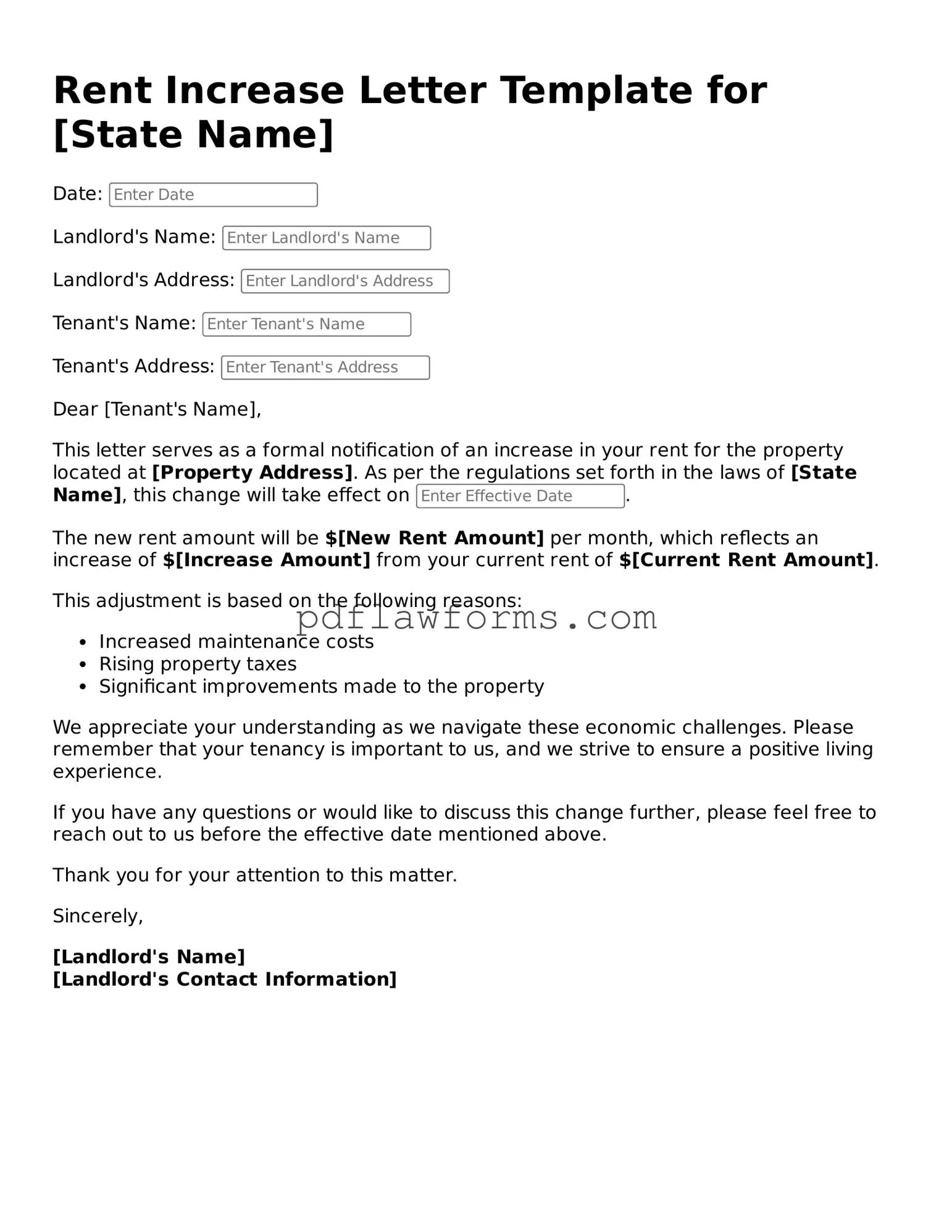Filling out a Rent Increase Letter form can be a straightforward process, but many people make common mistakes that can lead to confusion or delays. One frequent error is not providing complete information. Landlords must include their name, address, and contact details, as well as the tenant's information. Omitting any of these details can result in the letter being considered invalid.
Another common mistake is failing to specify the effective date of the rent increase. Without a clear date, tenants may be uncertain about when the new rent will take effect. This can lead to misunderstandings and disputes down the line.
Some landlords neglect to mention the reason for the rent increase. While not always legally required, providing a reason can foster transparency and maintain a good landlord-tenant relationship. Additionally, not adhering to local laws regarding notice periods can create legal issues. Many jurisdictions have specific requirements about how much notice must be given before a rent increase takes effect.
Inaccurate calculations can also be problematic. Landlords should double-check the new rent amount to ensure it reflects the intended increase. Mistakes in math can lead to disputes and erode trust. Furthermore, using unclear language or vague terms can confuse tenants. Clarity is key; the letter should explicitly state the new rent amount and any other relevant details.
Another mistake involves not keeping a copy of the letter for personal records. Documentation is crucial in case of future disputes. Landlords should also consider sending the letter via certified mail or another traceable method to ensure it is received. This provides proof of delivery and can be useful if any issues arise later.
Some landlords forget to sign the letter. A signature adds a personal touch and signifies that the letter is official. Additionally, not checking for spelling or grammatical errors can undermine the professionalism of the communication. A well-written letter reflects positively on the landlord.
Finally, failing to follow up with the tenant after sending the letter can lead to misunderstandings. A simple conversation can clarify any questions and reinforce the relationship. Avoiding these mistakes can make the rent increase process smoother for both landlords and tenants.
